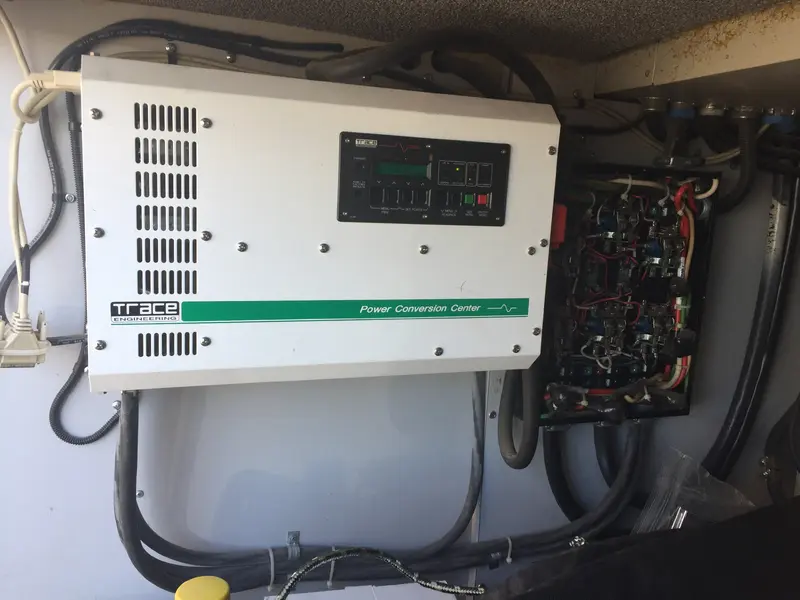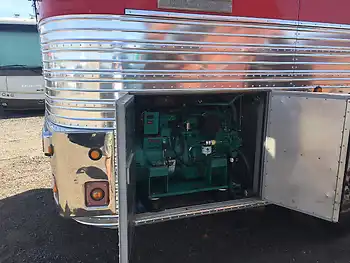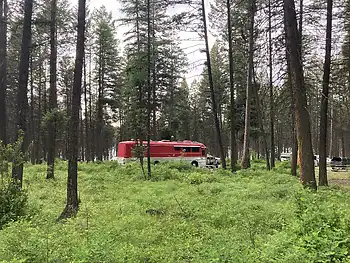Electrical
The first priority after buying the bus was to update the power system, as our previous rig (an Airstream) was severely under-powered. We wanted to use lithium so the batteries could charge and discharge quickly, and after some research it was clear that Elite Power had a very good battery management system, which is absolutely critical when using lithium cells. A search for a dealer revealed a company that was less than an hour away, and when I called Damian answered the phone. After a short conversation and a trip to see the bus, he agreed to consider using Victron products, which he was not familiar with, as they have some features that I wanted to use.
We worked on a design, found a local source for equipment, and once the bus was road worthy I drove to his home. He and his wife made the video below documenting the upgrade process.
A bit more detail about the features of the system is below, in case someone finds it helpful.
The bus is wired using marine grade cable, but with a residential style 240V breaker panel, taking each leg from the incoming 50A service and feeding various equipment. So, I simply had Damian at Sure Power install two 48VDC/120VAC Victron 5kW inverters, one feeding each side of the electrical panel, and configured the inverters to work in split phase, like a house. The generator was originally setup for 120V, but we reconfigured it for 240V so it feeds both inverters. As currently configured, both inverters charge the battery bank with up to 70Amps of 48VDC power each, which the lithium battery can quickly and safely absorb.
As a result, due to the 48-volt 5kWh lithium battery pack, everything can be used at anytime, with no concern about power usage. When the battery gets low, the generator kicks on and quickly charges the battery. It's nice in the summer being able to run the AC when on battery...at least for a while, would need to add another battery pack to do that all the time so there aren't too many charge cycles...which creates heat. When not using Air Conditioners, we can operate an entire day on roughly 1 hour of generator runtime, usually split into two 20-30 minute battery charging intervals, one in the morning and one in the evening. The genset is supposed to consume roughly 1 gallon of diesel an hour, so overall a pretty efficient setup.
The big feature which prompted the use of Victron equipment, was what is called power assist. In essence, you can power one or both inverters with any AC source, and they will use the battery to make up for the difference. In several cases at smaller RV parks in the summer the electrical system was overloaded, and the breaker would trip when I plugged in, because the system immediate maxed out the incoming power trying to charge the battery bank quickly. So, I simply limited the incoming current to 25 Amps, and left it that way until we left, as the battery would make up the difference if we used more than that.
More practically this has come in handy when staying at some very nice State Parks, where 30A service is the only (or best) option. By simply using a 30A to 50A adaptor available anywhere RV accessories are sold, one inverter receives shore power and the other runs off the battery. The inverter that has shore power also charges the battery, keeping the other inverter online. We have done this several times, and it works quite well.
Another nice feature, is being able to see how much shore power we have used within a user-definied time period. This is done using the touchscreen, or a web interface, as the system is connected to our internal network. As a result, we are able to estimate electricity bills when staying someplace which charges for power usage. In addition, we are able to estimate fuel usage, as the system tracks generator run-time.
There are several other nice features which I will document in more detail at some point, but hopefully this page is a somewhat informative synopsis of the system.


